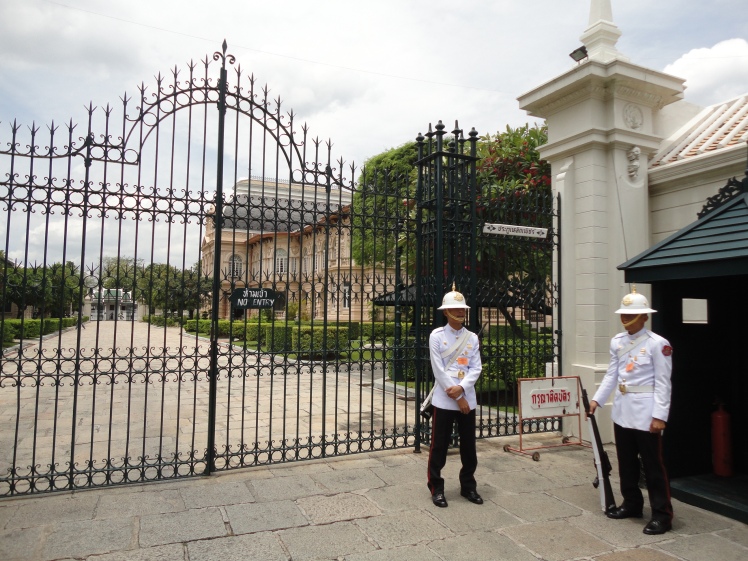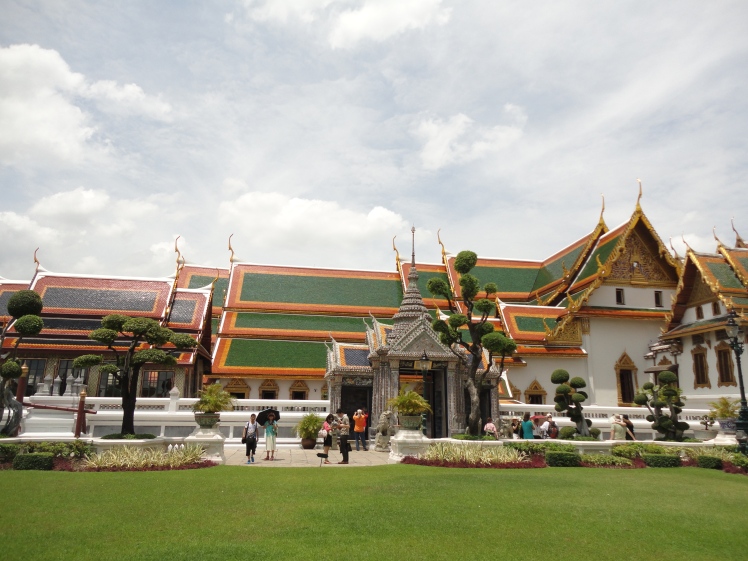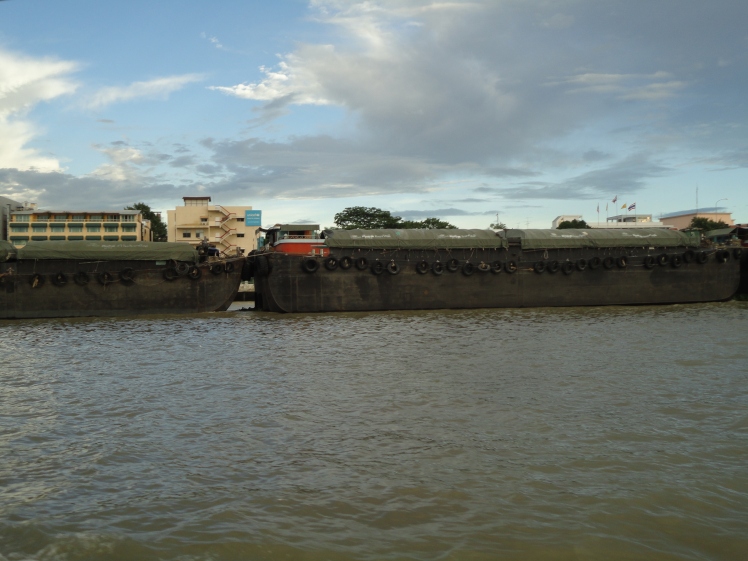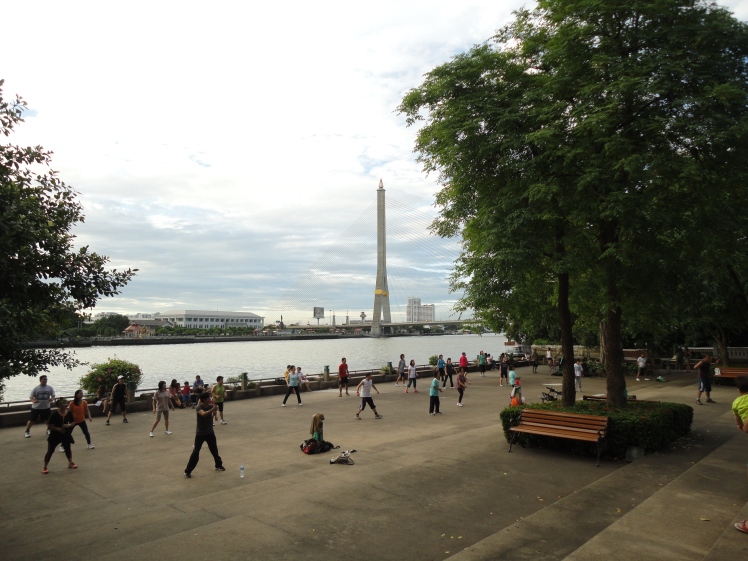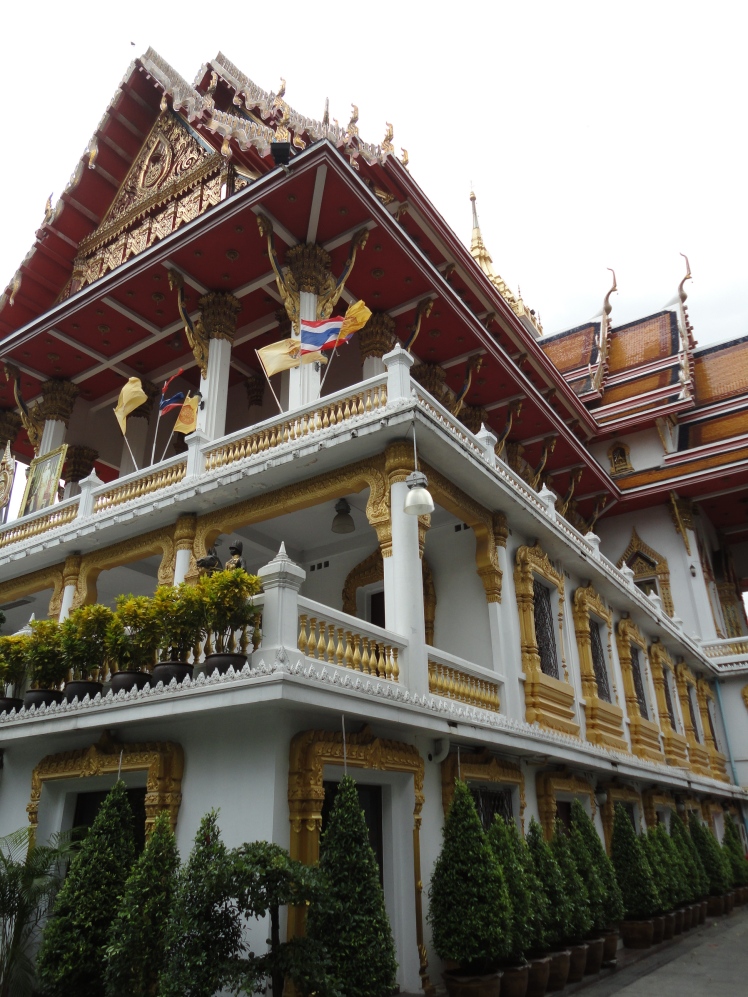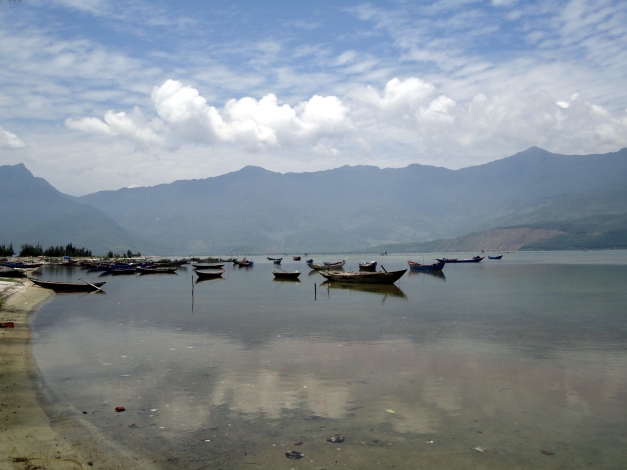
In my previous post, I spent a lot of time talking about how I didn’t quite like Bangkok, starting from the very first day. However, one of the highlights of Bangkok also happened on that first day as I got to see Muay Thai live at the Lumpinee Stadium.
Muay Thai or Thai kickboxing is one of the most famous martial arts in the world. As the name says, it involves punching and kicking, but also elbows and knees, which is why muay Thai is also known as the art of eight limbs (arms, legs, elbows and knees). It can be extremely devastating, as MMA (mixed martial arts) fans would know since kickboxing is one of the more common forms used by fighters such as UFC ex-champions Anderson Silva and Shogun Rua.
I’ve watched muay Thai fights online and the name Lumpinee Stadium often featured as the “mecca” of the sport. When I got the chance to go to Bangkok, I thought I’d make it to a muay Thai fight at Lumpinee. And by coincidence, that was how I broke the ice with my taxi driver on the way to my hotel the day I arrived.
Fights at Lumpinee take place three nights a week, and luckily for me, that day, Friday was one of them. I was dead tired for some reason so I took a long nap, then headed out in the evening on the subway, which turned out to be another annoyance.
Now, Bangkok has two rapid transit train systems – one is the subway and the other is the Skytrain. While they intersect at certain points, one needs to get off and transfer. And one also needs a separate fare. In the most inefficient way to do this, there is a machine to buy the fare but it only accepts coins. If you don’t have any, you need to line up at a service counter to exchange your bills into coins. As it was Friday evening, there were a lot of people and the lineup was long.
I reached the station by Lumpinee Stadium, itself called Lumpinee, and walked to the arena. I almost missed it as I walked a bit too far, then realized it was also on the other side of the street. Alas, it wasn’t a stadium, but a mid-sized arena. When I got inside, I was quite disappointed because it seemed like a rundown gymnasium rather than a world renowned fighting arena. The “stadium” was quite small and the total capacity could not be more than a few thousand. To be honest, that would be the last time that night I’d feel disappointed as the fights turned out to be good and the atmosphere ecstatic at times.
However, you can’t visit that place again because it’s been closed. The authorities have built a new Lumpinee Stadium at another location which opened earlier this year and which presumably is far more modern.
I bought my ticket, the third-class one which was the cheapest. But as I was a foreigner, I had to pay over 900 baht or $30, which is at least 5 times more than a local. It is marked in English (the foreigner price, not the local price) and as I was directed to a booth by a staff speaking English, they definitely could tell I wasn’t Thai.
I walked in, past security and people handing out flyers. I approached the railings to look down onto the ring and there was a boxing match going on. As I had come in before the official starting time, I was confused and asked a white guy nearby. He replied “sorry, I don’t speak English” in a Russian accent, which explained why.
I walked up to the railing and I had a clear, almost unobstructed view of the ring so I continued to stand during the whole show. Because this was the cheap section, there were no individual seats, but just long flat concrete levels, which is similar to say, secondary (high) school stadiums in Trinidad. Behind me, there the section was actually half empty, but the next one was packed. As the night went on, that would be where the frenetic gambling action would go on.
Right below was a VIP section for the event organizers and officials. A set of older gentlemen and several women, all in suits and business outfits, sat in this section. Every time someone entered the section, he or she would give a bow with hands clasped together upright in the traditional Thai way (known as wai), and receive them in return. The ringside seats had a noticeable number of Westerners. I would have been tempted to be in those seats too, if the price hadn’t been so exorbitant – keep in mind, my lowly third-class ticket was already $30.
Eventually it was clear the boxing bout was just an exhibition. The first real fight soon started and there would be about 11 more for the night.
Each match was preceded by an elaborate ceremony involving the two fighters – the Wai Khru. Both fighters would get into the ring, heavily garlanded, and go to all four sides and bow, then get in the center and do a rhythmic routine involving whirling fists and swaying their bodies which ended with getting onto the knees. Whilst on one knee, the fighter would sway back and forth extending his arms and rolling his fists, while tapping the floor with his other foot extended behind him. It was an impressive sight, almost as interesting as the fights themselves.
At the side of the ring, a band played continuously that included drums and a string instrument that sounded like an erhu (Chinese violin-like instrument). During the fights, they’d speed up as if to drive the action. The effect was quite mesmerizing.

Wai Khru pre-fight ritual all fighters did.
The first few fights were alright, but then the first knockout happened from a headkick from the side, and things got more exciting. The crowd started to get vocal and into it, especially when another fight proved to be particularly competitive. Whenever fighters clinched, the crowd would chant “knee” for each knee and roar continuously for each hard blow.
The fighters were mostly small and thin, though muscular. The fighters in the later bouts were stockier. Each time, the fighters made their way to the rinside with an entourage of trainers, friends and family, including father, mother, brother and girlfriend.
The undercard soon gave way to the main fights, which were actually not the very last fights. In the middle, there was a fight where the two fighters seemed a little different and when the action started, it was obvious why. It was just a comedic exhibition, meant to make people laugh.
By the time the sixth or seventh fight started, the betting soon heated up. In the next section, hands filled the air and people roared nonstop.
After the third-to-last fight, some people started clearing out, which confused me. I checked the flyer and it seemed there were still three more fights to go. Soon I realized it was because the main fights were in the middle. I was tempted to leave but I stayed till the end. The final fight appeared to be between two kids, though a guy told me they were 15 when I asked him.
I left satisfied in the end. The experience had been well worth it, despite the modest surroundings. The fighting had been great, but the cultural aspects such as the music and the prefight Wat Khru rituals were also impressive.

Before the actual fights, with a boxing bout going on while some fight organizers and officials look on right below me.

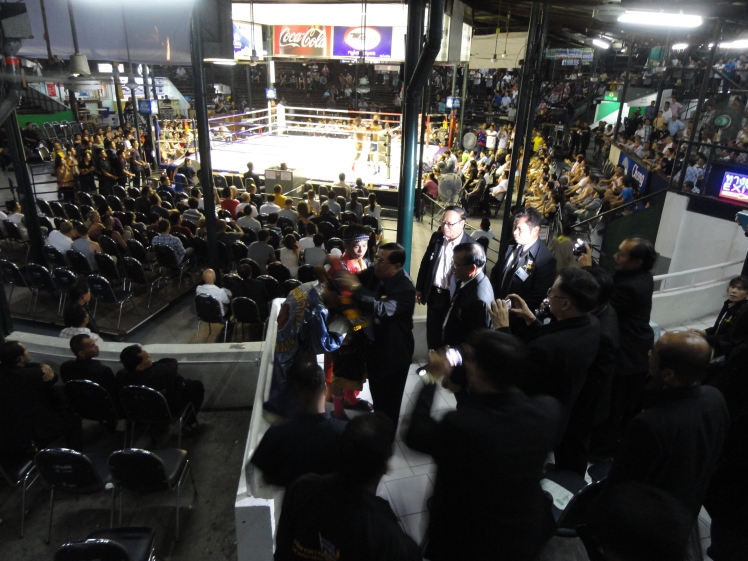





I really thought these combatants in the night’s final bout were kids, but a guy said they were 15.





















